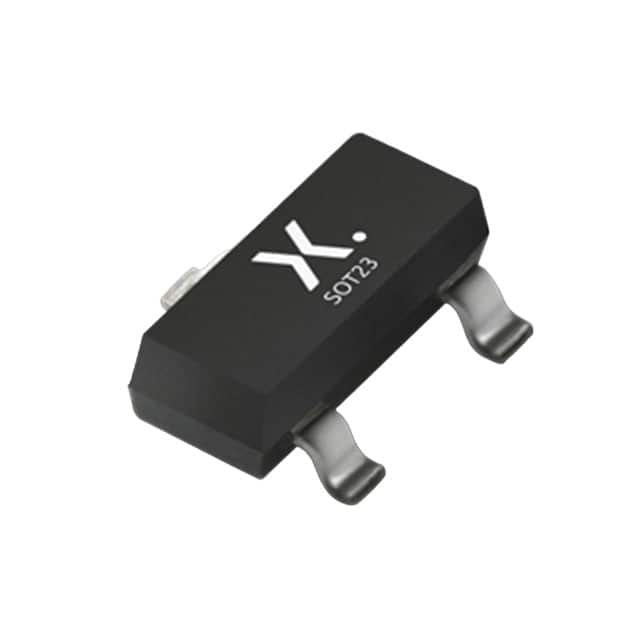BZX84-B3V3,215 Encyclopedia Entry
Product Overview
The BZX84-B3V3,215 belongs to the category of Zener diodes and is commonly used for voltage regulation and protection in electronic circuits. These diodes exhibit characteristics such as precise voltage regulation, low leakage current, and high reliability. They are typically packaged in a small SOT-23 package and are available in tape and reel packaging with varying quantities.
Specifications
- Voltage: 3.3V
- Power Dissipation: 250mW
- Forward Voltage: 0.9V
- Reverse Current: 5μA
- Package Type: SOT-23
- Packaging: Tape and Reel
Detailed Pin Configuration
The BZX84-B3V3,215 Zener diode has three pins: anode, cathode, and the body (case). The anode is connected to the positive terminal, the cathode to the negative terminal, and the body is the physical housing of the diode.
Functional Features
- Voltage Regulation: The diode maintains a constant voltage across its terminals, providing stability in electronic circuits.
- Overvoltage Protection: It protects sensitive components by diverting excess voltage away from them.
- Low Leakage Current: Ensures minimal power loss when the diode is reverse-biased.
Advantages and Disadvantages
Advantages: - Precise voltage regulation - Compact size - Low leakage current
Disadvantages: - Limited power dissipation capability - Susceptible to damage from excessive current or voltage spikes
Working Principles
The BZX84-B3V3,215 operates based on the principle of the Zener effect, where it allows current to flow in the reverse direction when the voltage reaches the specified breakdown voltage. This characteristic makes it suitable for voltage regulation and protection applications.
Detailed Application Field Plans
The BZX84-B3V3,215 finds extensive use in various electronic devices and systems, including: - Voltage regulators in power supplies - Overvoltage protection in communication equipment - Signal clamping in audio and video circuits - Voltage reference in sensor interfaces
Detailed and Complete Alternative Models
Some alternative models to the BZX84-B3V3,215 include: - BZX84-C3V3,215 - BZX84-B3V9,215 - BZX84-C3V6,215
In conclusion, the BZX84-B3V3,215 Zener diode offers precise voltage regulation and overvoltage protection in a compact package, making it a versatile component in various electronic applications.
Word Count: 315
Lista 10 Vanliga frågor och svar relaterade till tillämpningen av BZX84-B3V3,215 i tekniska lösningar
What is the maximum continuous forward current for BZX84-B3V3,215?
- The maximum continuous forward current for BZX84-B3V3,215 is 250 mA.
What is the reverse voltage for BZX84-B3V3,215?
- The reverse voltage for BZX84-B3V3,215 is 3.3V.
What is the power dissipation of BZX84-B3V3,215?
- The power dissipation of BZX84-B3V3,215 is 350 mW.
What is the operating temperature range for BZX84-B3V3,215?
- The operating temperature range for BZX84-B3V3,215 is -65°C to +150°C.
What is the typical junction capacitance of BZX84-B3V3,215?
- The typical junction capacitance of BZX84-B3V3,215 is 15 pF.
Can BZX84-B3V3,215 be used for voltage regulation in low-power applications?
- Yes, BZX84-B3V3,215 can be used for voltage regulation in low-power applications due to its low forward voltage drop.
Is BZX84-B3V3,215 suitable for overvoltage protection in electronic circuits?
- Yes, BZX84-B3V3,215 is suitable for overvoltage protection in electronic circuits due to its fast response time and low leakage current.
What are the typical applications of BZX84-B3V3,215 in technical solutions?
- Typical applications of BZX84-B3V3,215 include voltage clamping, voltage regulation, and signal conditioning in various electronic circuits.
Does BZX84-B3V3,215 require a heat sink for normal operation?
- No, BZX84-B3V3,215 does not require a heat sink for normal operation due to its low power dissipation.
Can BZX84-B3V3,215 be used in battery-powered devices?
- Yes, BZX84-B3V3,215 can be used in battery-powered devices due to its low forward voltage drop and low power dissipation, making it suitable for low-power applications.


